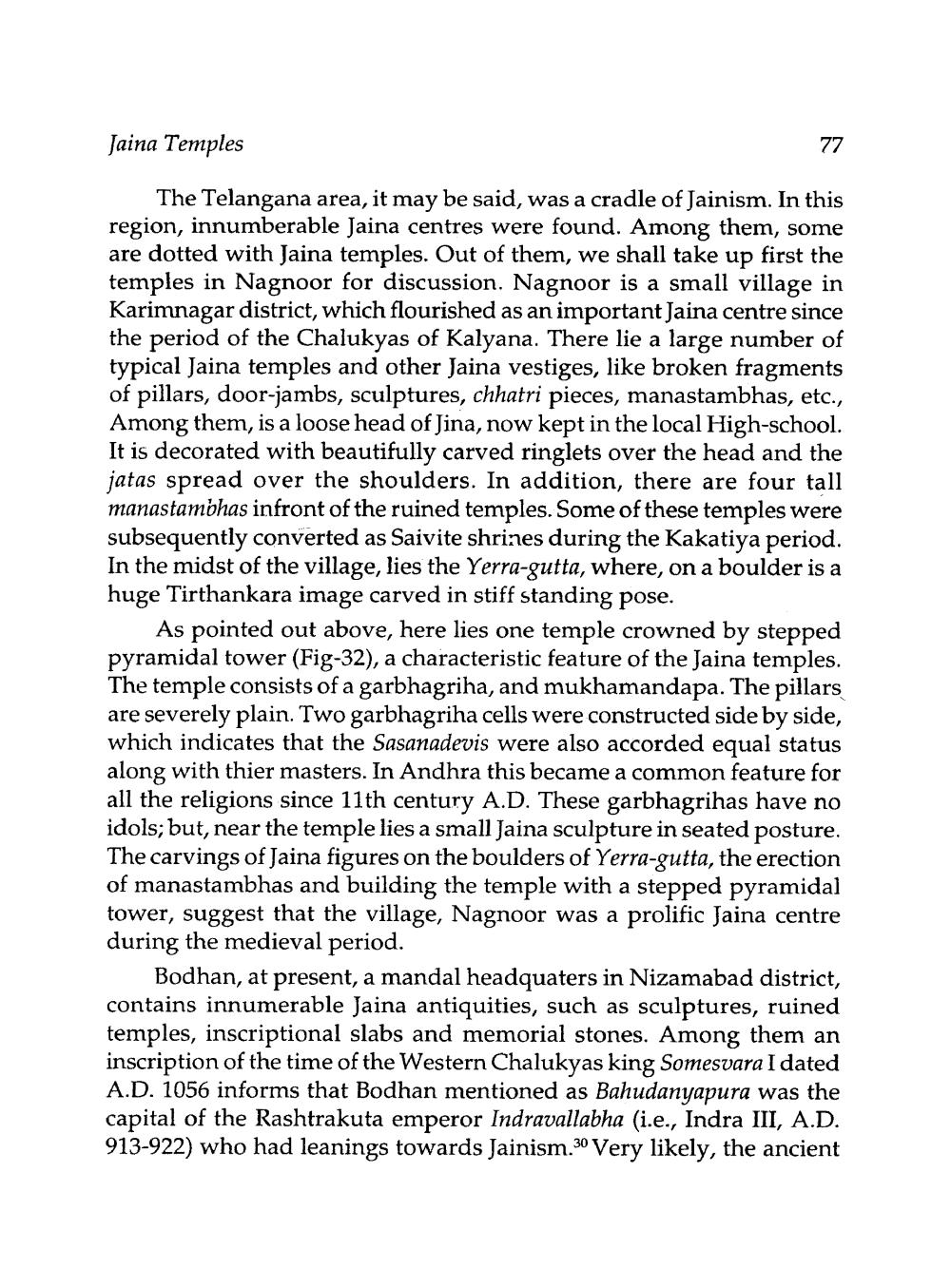________________
Jaina Temples
77
The Telangana area, it may be said, was a cradle of Jainism. In this region, innumberable Jaina centres were found. Among them, some are dotted with Jaina temples. Out of them, we shall take up first the temples in Nagnoor for discussion. Nagnoor is a small village in Karimnagar district, which flourished as an important Jaina centre since the period of the Chalukyas of Kalyana. There lie a large number of typical Jaina temples and other Jaina vestiges, like broken fragments of pillars, door-jambs, sculptures, chhatri pieces, manastambhas, etc., Among them, is a loose head of Jina, now kept in the local High-school. It is decorated with beautifully carved ringlets over the head and the jatas spread over the shoulders. In addition, there are four tall manastambhas infront of the ruined temples. Some of these temples were subsequently converted as Saivite shrines during the Kakatiya period. In the midst of the village, lies the Yerra-gutta, where, on a boulder is a huge Tirthankara image carved in stiff standing pose.
As pointed out above, here lies one temple crowned by stepped pyramidal tower (Fig-32), a characteristic feature of the Jaina temples. The temple consists of a garbhagriha, and mukhamandapa. The pillars are severely plain. Two garbhagriha cells were constructed side by side, which indicates that the Sasanadevis were also accorded equal status along with thier masters. In Andhra this became a common feature for all the religions since 11th century A.D. These garbhagrihas have no idols; but, near the temple lies a small Jaina sculpture in seated posture The carvings of Jaina figures on the boulders of Yerra-gutta, the erection of manastambhas and building the temple with a stepped pyramidal tower, suggest that the village, Nagnoor was a prolific Jaina centre during the medieval period.
Bodhan, at present, a mandal headquaters in Nizamabad district, contains innumerable Jaina antiquities, such as sculptures, ruined temples, inscriptional slabs and memorial stones. Among them an inscription of the time of the Western Chalukyas king Somesvara I dated A.D. 1056 informs that Bodhan mentioned as Bahudanyapura was the capital of the Rashtrakuta emperor Indravallabha (i.e., Indra III, A.D. 913-922) who had leanings towards Jainism.30 Very likely, the ancient




